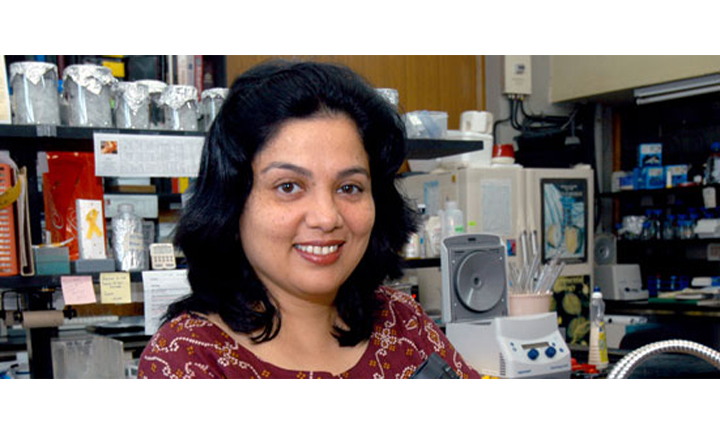Shubha Tole is one of the speakers at the 8th edition of TEDxGateway taking place on 4th February 2018 in Mumbai. Taking forward the theme of ‘Ideas Worth Spreading’, TEDxGateway is bringing 25 motivational speakers from different walks of life who will share their inspiring experiences and stories on varied topics ranging from science, inventions to creative art forms.

You’ve spent a long time studying brain development. What new things have you learnt? What would be your most important finding?
My group of talented students and postdocs have discovered several cool things about how the brain is constructed. One team identified an “organiser” in the embryonic brain that acts as a “lighthouse” instructing nearby cells to take on the properties of the hippocampus — the learning and memory centre of the brain. Another team identified a molecular “switch” that instructs stem cells in the embryonic hippocampus whether they should produce neurons or glia (support cells). Yet another team identified how DNA is modified in the stem cells of the brain so that they produce one specialised type of neuron versus another. We also obtained an insight into a developmental connection between evolutionarily ancient “emotion centre” of the brain, the amygdala, and the more recently evolved neocortex, where our language, cognitive functions, and perceptions are processed. All in all, it’s been quite a ride and we are fuelled by the excitement of what unusual discoveries lie ahead!
A lot of your papers on PubMed talk about genes involved in the development of a part of the human brain. What percentage of brain development do we truly understand as of now? How much more do we need to know to understand brain development fully? Are any of these genes more important than others?
We don’t work on the human brain, we study the embryonic mouse brain as a model. The genetic mechanisms that shape the mouse brain are similar to those in the human, so our insights would hold for understanding human brain development as well. We know of several genes that are important in controlling various aspects of brain development, now we and other labs across the world are studying how these genes interact with each other — in different combinations in different brain structures, and at different stages in development.
You study the development of brain cortex and amygdala. One is the seat of reasoning and the other the seat of emotion? Are these two parts of the brain really very different from each other? Does the common perception that reasoning and emotionality are mutually exclusive, also visible in the brain’s anatomy/development?
The amygdala and the cortex connect to each other. Yes, one processes emotion and the frontal cortex processes reasoning, but to actually ACT on anything one needs the motor cortex, the spinal cord, the nervous system works together. The amygdala is an evolutionarily older structure, even reptiles and amphibians have it. The neocortex is unique to mammals. It’s as if additional processing, integration, reasoning i.e. “higher cognitive functions” have been added on to the existing brain structure, during evolution. One of our studies identified that the genetic mechanisms used to produce one component of the amygdala are very similar to those used to produce the neocortex. The provocative hypothesis we put forth is that the neocortex may have arisen in evolution by expanding and modifying one part of the amygdala. This study created quite a buzz, and was the MSc thesis work of a young student in my lab, Ryan Remedios (Remedios et al., Nature Neuroscience, 2007).
Why did you choose to study brain development? Was it a gradual process or were you driven by a particular question or a personal life experience?
I have been fascinated with the brain since Std XI. What drove my imagination was visual perception. How does the brain create such rich representations of the outside world within itself? I just *had* to study the brain — no other organ or other scientific discipline gripped my interest more.
You’ve been a vocal scientist and involved in science outreach. You’ve spoken on TED Talk India and are now set to talk at TEDxGateway Mumbai. Do you think talking about your work to non-specialists has helped you or your work in any way?
Speaking to non-specialists, teaching students, doing workshops with school kids — all are invaluable for a scientist to clarify what they really, truly know, and what they are fuzzy about. It’s a lot of fun preparing for such a talk because you get triggered by your own quest to understand the topic properly — you read more widely than you otherwise might have, you “chew” on the questions you ask yourself, and the audience may ask you, in every spare moment. In one such session, when I was preparing to make the periodic table of elements more comprehensible to my son’s standard 8 friends, I found myself reading and discussing with colleagues in the Chemistry Department at TIFR, and it took some 20 glorious hours of preparation for me to understand the topic well enough to be satisfied I could introduce it creatively to 14-year olds. As I happily told my students afterwards, that we have the *best* jobs! We are paid to read, think, explore — whatever grips our curiosity is fair game. And reading widely, outside our areas of expertise, stimulates our minds to work better when we are reading within our specialisations.
What would you like to say to a young neuroscientist in India?
The sky’s the limit. The study of the brain is a journey of unparalleled excitement, twists and turns. Neuroscience is a fledgling field in India, so there’s freedom to find your niche and explore! There is so much enthusiasm and interest in learning about the brain, and it is rewarding to see young students who want to enter this field.